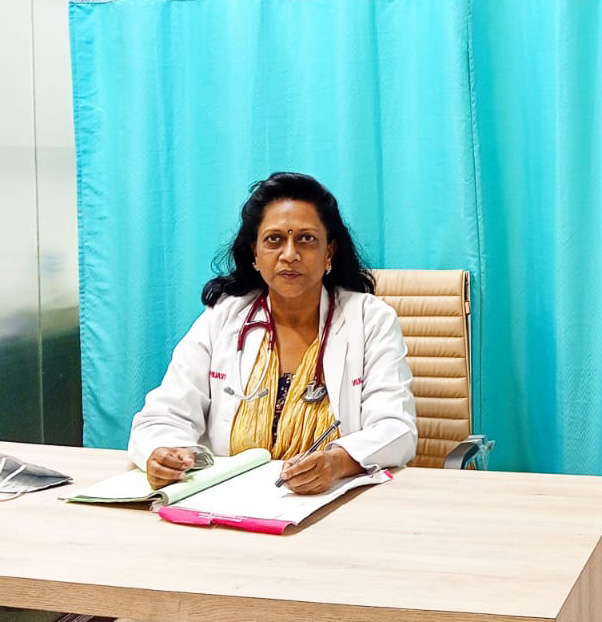Pilonidal cysts and pilonidal sinuses are conditions often misunderstood due to their similarities. However, understanding their differences is crucial for accurate diagnosis and appropriate treatment. Both involve issues in the sacrococcygeal region, typically near the base of the spine, and are more common in young adults, especially males. Let’s delve into the distinctions between these two terms and their medical implications as explained by Delhi’s leading surgeon, and specialist for pilonidal sinus and cyst Dr Amita Jain.
What Is a Pilonidal Cyst?
A pilonidal cyst is a sac-like structure filled with fluid, hair, and sometimes skin debris. It develops beneath the skin, often in the cleft of the buttocks, and is usually the result of ingrown hairs. These cysts can remain asymptomatic for a long time, but when infected, they cause discomfort and may progress to an abscess. Symptoms of an infected pilonidal cyst include redness, swelling, pain, and drainage of pus or blood.
Factors contributing to pilonidal cyst formation include excessive hair growth, prolonged sitting, poor hygiene, and obesity. While it can affect anyone, individuals with coarse hair or those whose occupation involves sitting for extended periods are at higher risk.
What Is a Pilonidal Sinus?
A pilonidal sinus, on the other hand, is a chronic condition characterized by the presence of one or more small tracts or tunnels beneath the skin. These tracts can connect to the surface through tiny openings. A pilonidal sinus often develops when an untreated pilonidal cyst becomes chronic and leads to recurring infections or abscesses.
Unlike a pilonidal cyst, which is an enclosed sac, a pilonidal sinus represents a more advanced stage of the condition where inflammation and infection create a pathway between the skin’s surface and underlying tissues. Symptoms of a pilonidal sinus include persistent pain, foul-smelling discharge, and recurring infections. In severe cases, multiple sinuses may form, making treatment more complex.
Key Differences Between a Pilonidal Cyst and a Pilonidal Sinus
- Nature: A pilonidal cyst is a closed sac, while a pilonidal sinus involves open tracts or tunnels beneath the skin.
- Progression: Pilonidal sinuses are often the result of untreated or recurrent pilonidal cysts.
- Symptoms: Pilonidal cysts may remain asymptomatic until infected, whereas pilonidal sinuses are typically associated with ongoing symptoms such as discharge and pain.
- Treatment Complexity: Pilonidal cysts may only require drainage, while pilonidal sinuses often need more extensive surgical intervention.
Treatment Options
Treatment for both conditions depends on severity:
- Pilonidal Cyst: Minor cysts can be managed through incision and drainage. Recurrent or large cysts may require surgical removal.
- Pilonidal Sinus: Surgery is the most effective treatment for pilonidal sinuses. Procedures like excision with primary closure or flap techniques are used to remove the sinus and minimize recurrence.
Prevention Tips
- Maintain proper hygiene, especially in the sacrococcygeal region.
- Avoid prolonged sitting.
- Remove excess hair through shaving or laser hair removal.
- Wear loose, breathable clothing.
Understanding the differences between pilonidal cysts and pilonidal sinuses is vital for timely and effective treatment. If you suspect either condition, consult a healthcare professional promptly to prevent complications.

Dr Amita Jain is a surgeon with the highest degree of professional competence, precision and surgical craftsmanship. Performed all complicated general surgery procedures with in depth knowledge of invasive and few minimal invasive and onco surgical techniques. Underwent special training in trauma, executed various trauma-related complex life-saving neurosurgical procedures, reconstructed injured mangled limbs and performed vascular and reconstructive procedures with critical care.
Dr Amita Jain holds 28 plus years of rich experience in Trauma and General Laparoscopic Surgeries (including Gallbladder stone removal, appendix removal, hernia repair surgery, piles and fissure surgeries). She was the Professor Surgery of at the Army College of Medical Sciences and Base Hospital Delhi Cantt. In 1994 she was commissioned as Surgeon under the United Nations Mission in Congo. From 2020 to 2022, she worked with Bansals Hospital. Currently, Dr Amita Jain is the Senior Consultant, (Speciality: General and Laparoscopic Surgeon) at Artemis Lite Hospital, New Delhi and Sr. General and Laparoscopic Surgeon at Rainbow Children Hospitals, Malviya Nagar, Delhi.
